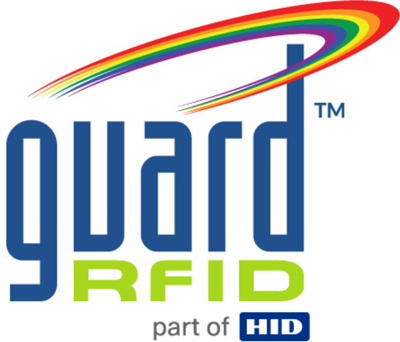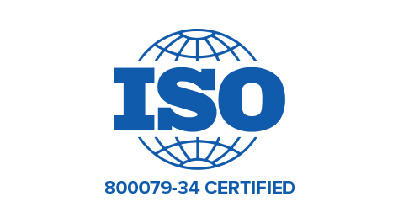How does RTLS work?
RTLS is a technology that offers real-time location data for both people and assets using radio frequency communication. Receivers and readers are used to provide reference points to define different areas, and RFID (active radio frequency identification) tags are affixed to people or assets for location monitoring. The tags send a signal, or beacon, to the receivers periodically to provide identification and location information.
What does RTLS stand for?
RTLS stands for real-time location (or locating) system. It is a type of radio frequency technology used to automatically identify and track the location of objects or people.
What is RTLS?
RTLS stands for real-time location (or locating) system. It is a type of radio frequency technology used to automatically identify and track the location of objects or people.
What is an RTLS system?
A real-time location system (RTLS) is a system used to provide automatic management and tracking of people or objects within healthcare, commercial, and industrial environments. It consists of small identification tags that are attached to people or assets and beacon at regular intervals so that fixed readers and receivers can receive and report on their location within a defined indoor or outdoor space.
What is RTLS technology?
RTLS technology, also known as real-time locating system technology, offers real-time location data for both people and assets using radio frequency communication. It is applicable within healthcare, commercial, and industrial environments. RTLS technology consists of specialised fixed readers (or receivers) that receive signals from small identification tags, which are attached to people or assets to determine where the tagged entity is located within a defined indoor or outdoor space.
What are some liabilities with RTLS?
RTLS systems are often used to support security applications. When RTLS is used as part of a security solution, the following steps should be carried out to ensure that the system is appropriate for the application: • Staff are trained in how the system works. • Regular testing is carried out to verify that the system is working as designed. Test scenarios are used to verify that all aspects of the security solution are working as they should.
How can RTLS improve the patient discharge process?
RTLS can improve efficiency and provide cost-cutting benefits to hospitals. If patients are assigned badges/tags during admission that monitors their location while in the hospital, then environmental services can be notified immediately when patients are discharged about the need to clean the vacated patient room. By knowing where patients are and when they were going to be discharged, workflow is improved, and room turnover is expedited.
How RTLS systems can help hospitals?
Technology that offers real-time location data for both people and assets is of considerable value to any healthcare organization. RTLS systems often use radio frequency identification (RFID) technology to provide healthcare professionals with identification, communication, monitoring, and traceability data for equipment, staff and, most importantly, patients. This can help healthcare organizations in the following ways: • Prevent infant abductions • Ensure mother-baby mismatches do not occur • Prevent patients with cognitive challenges from wandering away from the facility or into restricted zones • Provide safety and security for staff • Locate employees quickly and summon help when needed • Prevent non-authorized staff from accessing secured areas • Accurate equipment tracking • Prevent lost or stolen equipment
What is RTLS asset tracking?
A real-time location system (RTLS) is a precise positioning system that can be used to track, protect, secure, and manage a wide variety of objects in real-time within a broad range of industrial, commercial, and healthcare environments. By adding active RFID tags to your assets, you can monitor their location in real-time and be alerted or trigger alarm responses when an asset is removed from a designated area. You can also find lost or misplaced items by knowing their exact location when you need them.
How does RTLS work in healthcare?
Real-time location systems, RTLS, are used to identify and track the location of assets and/or people in real-time. An RTLS has many applications in healthcare. In general, it can be used to locate portable assets and equipment, locate staff and patients quickly and efficiently, restrict patient movement beyond defined parameters, and improve workflow.
What is the difference between RTLS and RFID?
Radio frequency identification (RFID) is a technology used to identify objects when in close proximity to a reader. This is used for similar purposes as bar-codes. A real-time location system (RTLS), is a system used to provide automatic management and tracking of people or objects within healthcare, commercial, and industrial environments. RTLS is a technology used to locate objects within an area. The system provides a 2-dimensional X-Y location for objects. And active RFID is one method that can be used for RTLS. Other solutions utilize Wi-Fi, Bluetooth, and cellular technologies. RFID is a form of wireless communication that uses radio waves to uniquely identify and track objects using a tag and a reader. Unlike barcode tracking, RFID tag data can be read outside the line-of-sight and without physical contact between the tag and reader. Active RFID systems are battery powered to continuously broadcast their location. In this way, Active RFID tags serve as “beacons” to track the real-time location of assets. Active RFID tags operate using a high radio wave frequency and this provides for a greater operating range so that the tags can be detected over longer distances.
How does RTLS work in industrial settings?
Real-time location systems, RTLS, are used to identify and track the location of assets and/or people in real-time. An RTLS has many applications in industrial settings. In general, it can be used in the following ways: • Locate portable assets and equipment • Prevent asset theft and loss • Locate staff quickly and efficiently • Monitor employees’ location during a muster situation • Protect staff with man-down alarms and push-button alerts • Report and monitor employee time and attendance • Restrict staff movement beyond defined parameters
How does RTLS work in commercial settings?
Real-time location systems, RTLS, are used to identify and track the location of assets and/or people in real-time. An RTLS has many applications in commercial settings. In general, it can be used in the following ways: • Locate portable assets and equipment • Prevent asset theft and loss • Locate staff quickly and efficiently • Monitor employees’ location during a muster situation • Protect staff with man-down alarming and push-button alerts • Report and monitor employee time and attendance • Restrict staff movement beyond defined parameters
How can RTLS improve worker safety?
An RTLS gives you a reliable and real-time view of your tagged personnel and helps you ensure the safety of these people, wherever they may be. An RTLS can do the following: • Track and locate employees during emergency situations • Automatically count personnel at muster stations • Notify when employees raise a distress call • Locate where employees, visitors, and contractors are at any time • Provide prompt assistance to staff in isolated environment An active RFID RTLS is designed specifically for keeping employees out of harm’s way and for monitoring lone workers in real-time. It can also enable people to call for help in an emergency.
How can RTLS track COVID-19?
With the re-opening of physical workplaces during the COVID-19 pandemic, RTLS can play a critical role in helping with contact tracing. With the ability of RTLS to identify and trace the location of people in real-time, it automates the contact tracing process. If someone is diagnosed with an infectious disease, like COVID-19, an RTLS solution can report all proximity connections to the patient using its breadcrumb trail capability. This eliminates the ambiguity associated asking employees to recall potential contact with the infected person.
What is the difference between active RFID and GPS?
Global positioning systems (GPS) uses signals received from earth orbiting satellites to determine the 3-dimensional location of objects. The system is available throughout the world and can provide an accuracy of better than 100 m (328 ft) in most places. In some cases (e.g. inside buildings) the satellites may not be visible and cause the system to fail. GPS is used by most smartphone devices for position location and there are many handheld and mobile devices that provide location information using GPS. Active RFID based RTLS utilizes a custom deployed array of devices to allow the location of people and equipment within a local area or inside buildings. The person or object being located carries or wears an active RFID tag to allow the system to locate them within 10m (32ft). Active RFID devices are typically smaller, lighter, have longer battery life and are less expensive than devices used for GPS positioning. The benefit of GPS positioning is that it does not require the deployment of specific infrastructure.
What are the benefits of RTLS?
The benefits of using an RTLS are many and differ greatly depending on the industry and purpose. For example, a healthcare facility will have different needs and gain different benefits than an oil and gas plant or a data center. Here are the top 5 benefits to using RTLS in healthcare: • Protecting infants • Preventing patients with cognitive disabilities from wandering from secured areas • Locating and monitoring equipment • Improving patient flow • Locating employees quickly and summoning help when needed Here are the top 5 benefits to using RTLS in commercial and/or industrial settings: • Guarding against equipment loss and theft • Locating employees in the event of a distress call or crisis • Monitoring personnel movement • Controlling access • Enhancing and streamlining operations and processes
What is the typical ROI on an RTLS system?
Adding a real-time locating system (RTLS) to an organization can help cut costs in many ways, including: 1. Loss Prevention 2. Reducing unnecessary capital expenditures 3. Improving asset and area utilization 4. Workflow and processes efficiency 5. Quick response in emergency situations
What should we look for in an RTLS vendor?
A range of RTLS vendors offering RFID technology exists in the marketplace and it can be difficult to discern the differences between them. Here are 10 factors to consider when choosing an RTLS vendor: 1. Does the vendor offer a variety of tags to suit your different needs? 2. What type of RFID technology is used and what are the pros & cons of the technology in relation to your needs? 3. Does the technology integrate with your other systems to improve ease of use and organization compatibility? 4. Did the company acquire different technologies to create its solution or was it purpose-built from the ground up? 5. Is the RTLS solution a proven platform in your industry? 6. Does the vendor offer a comprehensive training program for all levels of staff? 7. What kind of location accuracy does the platform provide? 8. How responsive is the company to customer requests? 9. Are there a broad set of use cases in a single platform or does expanding require additional costs and modules? 10. What is the battery life and replacement costs for tags?
When to choose active RFID over Bluetooth?
Active RFID RTLS systems have been proven in many applications over the last 20 years. Many manufacturers provide robust, reliable, industrial grade solutions. While Bluetooth is an emerging standard for RTLS applications. Currently, the main applications of Bluetooth RTLS have been for retail which have less demanding requirements than industrial, commercial and healthcare solutions. It can be expected that the solutions will become hardened over time such that they may be suitable for other use cases. Active RFID operating at 433MHz frequency (in the case of GuardRFID) is better than Bluetooth at locating tags worn on people and in environments where there are many obstructions, particularly from metal objects.
When to choose active RFID over Wi-Fi?
Both Wi-Fi and Active RFID RTLS systems have been proven in many applications to offer a reliable method for locating objects and people. Wi-Fi systems are preferred by customers that wish to utilize a common infrastructure for Wi-Fi data communications and RTLS. This reduces the cost of deployment and maintenance of the infrastructure. However, it does also introduce some risk of interference or cyber security breach between the systems. Active RFID has been shown to deliver more reliable location and faster response times (e.g. for applications requiring alarms and access control) than similar Wi-Fi solutions. This is due both to the RF frequency used (433MHz) and the fact that the RTLS network is dedicated and not shared with data traffic. Hence it is often preferred for applications that are designed for people security. The tags used for active RFID systems are generally smaller, lighter and have a longer battery life than equivalent tags that are used for Wi-Fi RTLS. This difference is important for cases where the tags are attached to people (particularly infants) for longer periods of time.
What is an active RFID sensor?
Active radio-frequency identification (RFID) is a form of wireless communication that uses radio waves to uniquely identify and track objects, such as assets and people. The infrastructure or hardware used consists of active RFID tags, readers (or sensors), and exciters. The reader transmits an interrogator signal and receives replies from tags. Readers are fixed to walls and ceilings to create a specific interrogation or monitoring zone.
What is an active RFID exciter?
Active radio-frequency identification (RFID) is a form of wireless communication that uses radio waves to uniquely identify and track objects, such as assets and people. The infrastructure or hardware used consists of active RFID tags, readers (or sensors), and exciters. Active RFID exciters transmit low frequency signals to trigger (or awaken) tags as they approach the exciter. Exciters are used at chokepoints such as doorways and stairwells to detected tags at close range.
What is an active RFID tag?
Active radio-frequency identification (RFID) is a form of wireless communication that uses radio waves to uniquely identify and track objects, such as assets and people. The infrastructure or hardware used consists of active RFID tags, readers (or sensors), and exciters. Active RFID tags are affixed to the people or assets you want to track. Tags include a battery and antenna to transmit data continuously to the readers to identify and track the real-time location of an object. Active RFID tags operate using a higher radio wave frequency which provides a greater operating range so tags can be read over farther distances. Tags come in many shapes and sizes, and some include extra functionality such as two-way communication and man-down alarms.


